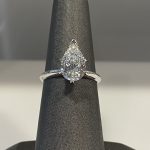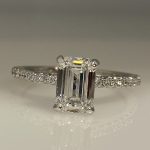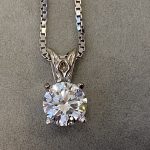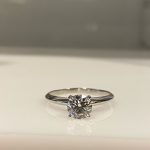Lab-Grown Diamonds
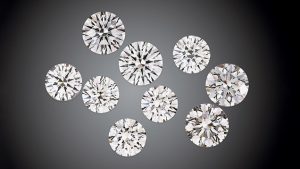
What Are Lab-Grown Diamonds?
Lab-grown diamonds are produced artificially in a factory or laboratory. Instead of being formed over millions of years in the Earth’s mantle like natural diamonds, scientists are creating lab-grown diamonds from rough crystal formed in laboratories. Lab-grown diamonds are not the same as imitations or simulants. Imitations like cubic zirconia and moissanites look like diamonds but have different chemical and physical properties.
Lab-grown diamonds have similar chemical and physical properties making them harder to detect. Often trained gemologists can recognize synthetic or treated diamonds using standard gem-testing equipment. There are two main types of synthesis. HPHT: high-pressure, high-temperature and CVD: chemical vapor deposition. Most lab-grown diamonds on the market currently are created using a combination of CVD and HPHT synthesis.
HPHT Synthesis:
HPHT diamond growth takes place in a small capsule within an apparatus capable of generating very high pressure. Within the capsule, diamond powder starting material dissolves in the molten metal flux, and then it crystallizes on the seed to form the synthetic diamond crystal. Crystallization occurs over a period of several weeks to a month or more to create one or a few crystals. Because of the very short growth period, the shape of a lab-grown diamond crystal is very different from that of a natural diamond. The lab-grown diamond crystal show cubic faces in addition to octahedral ones. Their internal growth patterns differ from natural diamonds, making their unique growth patterns the most reliable ways to separate them. Once faceted the synthetic diamonds often have visual features such as color distribution, fluorescence zoning, and graining patterns related to their cross-shaped, growth-sector structure, as well as the presence of occasional dark flux-metal inclusions. Most HPHT-grown crystals are yellow, orangey yellow, or brownish yellow.
CVD Synthesis:
Chemical vapor deposition or low-pressure, high temperature (LPHT) growth involves synthetic formation in a vacuum chamber filled with a carbon-containing gas (like methane). A source of energy like a microwave beam breaks down the gas molecules and carbon atoms are attracted downward to flat diamond seed plates. Crystallization occurs over a period of several weeks to create a number of crystals at the same time. The lab-grown diamond grows in thin layers and its final thickness depends on the amount of time allowed for growth. This results in flat, tabular crystals with exteriors coated in black graphite crystals. CVD lab-grown diamonds have different gemological properties than HPHT-grown material. They tend to display even coloration and have high clarity with few, if any tiny dark carbon inclusions. Colorless crystals are easier to produce with this method, but require a longer growth period. Most CVD crystals are brownish or grayish. HPHT annealing is believed to be used to decolorized the brown CVD crystals on the market to make them colorless.
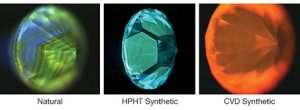 Fluorescence imaging of characteristic growth patterns within diamond crystals.
Fluorescence imaging of characteristic growth patterns within diamond crystals.
Harold Finkle “Your Jeweler” specializes in lab-grown diamonds that are exclusively grown and hand-cut in the USA. We offer lab-grown diamonds in various shapes, sizes, and quality. Each lab-grown diamond is laser inscribed on the girdle and has a certificate or grading report. Depending on the size and quality, lab-grown diamonds are a fraction of the price of natural diamonds. 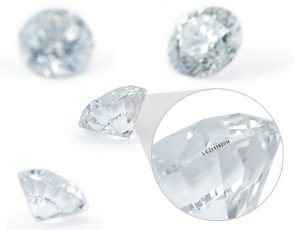
Please visit our Lab-Grown Diamond Search here
If you would like to schedule a showing of a Lab-Grown Diamond in person or have any questions please feel free to call (518) 456-6800 or fill out the form below:
